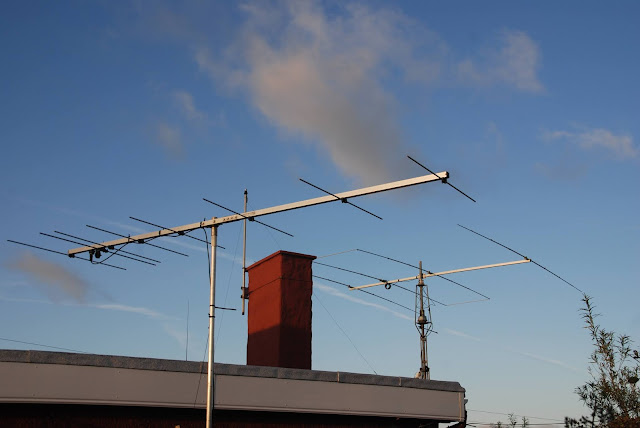Here in the UK, our regulator, OFCOM, recently introduced mandatory compliance with RF safety limits.
I'm not a member of the RSGB, but I gather that there has been a large amount of criticism of OFCOM about the rationale for these rules, and the manner in which amateurs with no knowledge, experience or apparatus in assessing RF safety can, in fact, assess it.
In any case, the ship has now sailed, and we have to demonstrate compliance, "if required". I doubt most of us will ever be contacted about this in practice.
 |
| RF 'safe' distances at 144MHz are very different to 24MHz. |
But if you are asked to show compliance, how do you do it? OFCOM have a very simplistic applet that runs under a spreadsheet. This has also, rightly, come in for a lot of criticism, and even my untrained eyes can see it misses out a lot of important detail. Nothing on ground reflections, absorption, mast height, etc.
So I was interested to come across G1KQH's recent post about a much more comprehensive calculator.
I was interested in the obvious, worst-case antenna that I use, which is an 8-element, 144MHz Yagi. It's only 4 metres above ground, as I am already at over 100m up, with a clear line of sight in most directions. I also use an amplifier, typically pushing out about 110W or so. As there is a public footpath running very close to it, a computation of RF exposure is a good idea, even if, in practice, nobody ever uses that path. If they did, they would only be present for a few seconds.
No allowance is made for exposure time, as the whole thing seems to be based on permanent exposure at the selected power, antenna, and duty cycle values, such as might loosely apply in the case of a close neighbour or something like that. For transient public presence, I suppose it would be justifiable to reduce the 'effective duty cycle' to near zero.
This is a grab of the output, suggesting that I shouldn't have to change anything, showing that even a close passage to the mast would remain 'safe' (noting that there is no scientific literature to determine what is unsafe at HF - I asked ICNIRP, OFCOM, PHE and the rest to check). If I raised the antenna by just 0.5m, it would be 'safe' directly next to the pole, at zero distance.
 |
| An attempt to compute RF exposure for my 8-ele, 144MHz Yagi. |
Now, it's important to stress that, just like OFCOM's applet, nobody can see what equations and assumptions any of these calculators are using in the background. OFCOM would have to tell us if we asked, but software written by others - especially if they have since died - will remain an unkown 'black box', unless it's open source.
The real test would come if someone complaining about RF exposure went to town and took up a case in law. I expect that would be an incredibly technical, very expensive and hotly contested case, because there is (a) no peer-reviewed evidence for harm advanced by any of the authorities at present (b) methods of assessment may be flawed, and (c) different experts may well reach different conclusions.
But I guess more, and perhaps more accurate calculators will now start appearing, as people worry about compliance, ridding themselves of the inevitable malicious complaints some will get, or just from the underlying feeling of duty to comply that such rules bring.
No comments:
Post a Comment